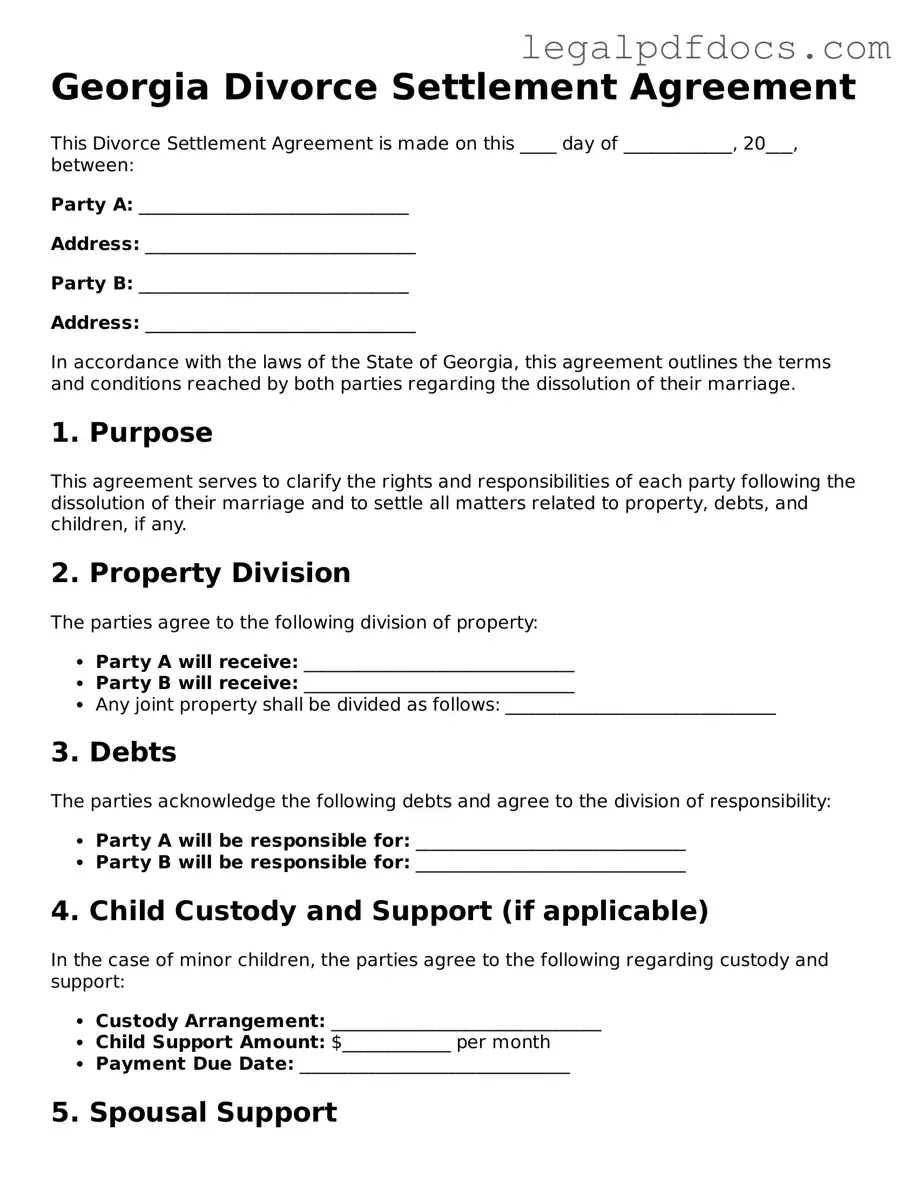Official Divorce Settlement Agreement Form for Georgia
The Georgia Divorce Settlement Agreement form is a legal document that outlines the terms and conditions agreed upon by both spouses during a divorce. This form addresses crucial issues such as property division, child custody, and support obligations. Completing this agreement is essential for a smooth divorce process, so be sure to fill out the form by clicking the button below.
Open Divorce Settlement Agreement Editor Here
